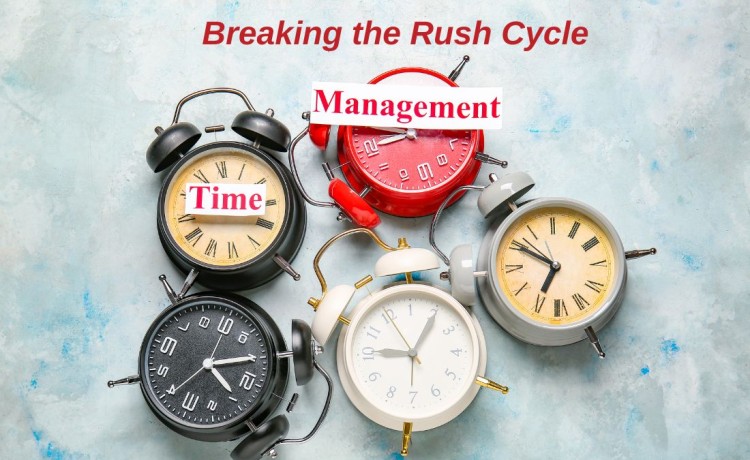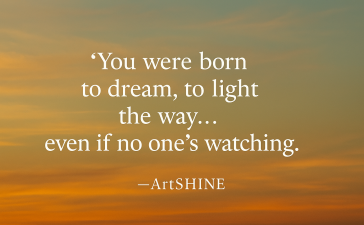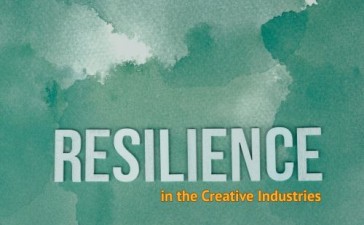As artists, designers, and creative professionals, we often find ourselves in a constant state of rush. The pressure to meet deadlines, generate new ideas, and juggle multiple projects can leave us feeling overwhelmed and always behind schedule. But why does this happen, and more importantly, how can we break this cycle?
Let’s explore the reasons behind our perpetual rush and discuss strategies to better manage our time and energy.
The Nature of Creative Work
Creative work is inherently unpredictable. Inspiration can strike at odd hours, and the creative process often doesn’t adhere to a strict timeline. This unpredictability, combined with the passion that drives many creatives, can lead to irregular work patterns and a tendency to push deadlines to the last minute.
Moreover, the creative industry often operates on tight schedules and quick turnarounds. Clients may request last-minute changes, or opportunities may arise that require immediate attention. While these factors contribute to the excitement of creative work, they can also lead to a constant sense of urgency.
The Importance of Planning and Goal Setting
To combat the rush, it’s crucial to implement effective planning and goal-setting strategies. By organizing our time and priorities, we can create a more structured approach to our creative work without stifling our artistic freedom.
- Set Clear Goals: Define both short-term and long-term goals for your creative career. These goals should be SMART: Specific, Measurable, Achievable, Relevant, and Time-bound.
- Break Projects into Manageable Tasks: Large projects can be overwhelming. By breaking them down into smaller, actionable tasks, you can make steady progress and avoid last-minute rushes.
- Use a Calendar or Planner: Visualize your commitments and deadlines. This helps in allocating time effectively and avoiding overbooking.
- Prioritize Tasks: Not all tasks are created equal. Use the 4 Dos method to categorize your tasks:
- Can Do: Tasks that can be done but are neither urgent nor important.
- Could Do: Tasks that can be carried out but are not so urgent or important.
- Would Do: Essential tasks but not so important.
- Must Do: Important tasks that need to be actioned right away.
Organizing Your Day
A well-organized day is key to avoiding the rush mentality. Here are some strategies to structure your time effectively:
- Create a Daily Routine: Establish a consistent wake-up time and dedicate specific hours to different types of work (e.g., creative time, admin tasks, client meetings).
- Use Time-Blocking: Allocate specific time blocks for different tasks or projects. This helps in maintaining focus and avoiding multitasking.
- Schedule Breaks: Regular breaks are essential for maintaining creativity and preventing burnout. Include short breaks between tasks and longer breaks for meals and relaxation.
- Set Realistic Deadlines: When agreeing to deadlines, factor in potential setbacks and allow buffer time for unexpected issues.
- Learn to Say No: It’s okay to decline projects or commitments that don’t align with your goals or current workload.
Avoiding Last-Minute Rushes
Last-minute rushes are often the result of poor planning or procrastination. Here’s how to avoid them:
- Start Early: Begin projects as soon as possible, even if it’s just initial brainstorming or research.
- Set Milestones: For longer projects, establish intermediate deadlines to ensure steady progress.
- Anticipate Challenges: Consider potential obstacles and plan for them in advance.
- Communicate Regularly: Keep clients or team members updated on your progress to avoid misunderstandings or sudden changes.
- Build in Buffer Time: Always allow extra time for revisions, unexpected issues, or creative blocks.
Focus on What You Can Control
It’s important to recognize that not everything is within our control. External factors like client feedback, market trends, or personal emergencies can disrupt our plans. The key is to focus on what we can control:
- Your Work Environment: Create a space that enhances your productivity and creativity.
- Your Skills: Continuously improve your craft and stay updated with industry trends.
- Your Habits: Develop positive habits that support your creative work and time management.
- Your Responses: Choose how you respond to challenges and unexpected changes.
Prioritizing Effectively
Effective prioritization is crucial in managing time and avoiding constant rush. Here’s how to prioritize your tasks:
- Use the Eisenhower Matrix: Categorize tasks based on their urgency and importance.
- Consider Impact: Prioritize tasks that have the most significant impact on your goals.
- Evaluate Energy Levels: Match high-priority tasks with times when your energy and focus are at their peak.
- Review and Adjust: Regularly review your priorities and adjust as needed based on changing circumstances.
Breaking the Rush Cycle
By implementing these strategies, you can break the cycle of constant rush:
- Plan Ahead: Use your calendar to plan weeks or even months in advance.
- Build in Flexibility: Allow room for unexpected opportunities or setbacks.
- Practice Mindfulness: Stay present and focused on the task at hand rather than worrying about future deadlines.
- Celebrate Progress: Acknowledge your accomplishments, no matter how small, to maintain motivation.
- Reflect and Adjust: Regularly evaluate your time management strategies and adjust as needed.
Conclusion
The rush mentality in creative professions is often self-imposed and can be overcome with proper planning, prioritization, and time management. By organizing our days, setting clear goals, and focusing on what we can control, we can create a more balanced and less stressful approach to our creative work. Remember, creativity thrives in a state of flow, not in a constant state of urgency. By managing our time effectively, we can create space for inspiration, innovation, and quality work without the perpetual feeling of being rushed.
- Find out more
- Launch Pad + Accelerator Expressions of Interest
- Selling and Licensing Your Art & Designs Around the World with ArtSHINE.
- Looking for exciting new Art and Designs to license.
We’re here to help you to take action, just like we’ve helped thousands of other entrepreneurs, business owners, and creative professionals all around the globe.
Now is the time to let your passion SHINE.
Now is the time to Make Tomorrow Today!
To your success, Vinh Van Lam and Stuart Horrex Cofounders ArtSHINE.com





